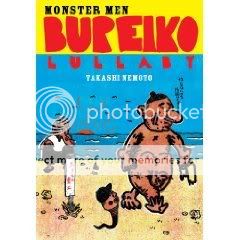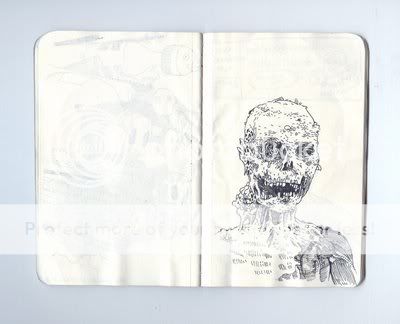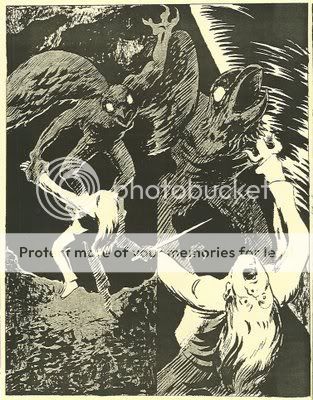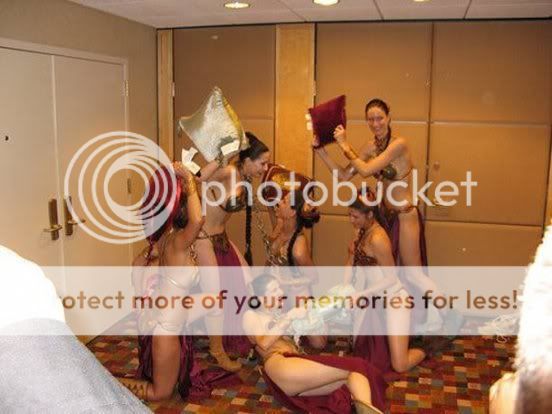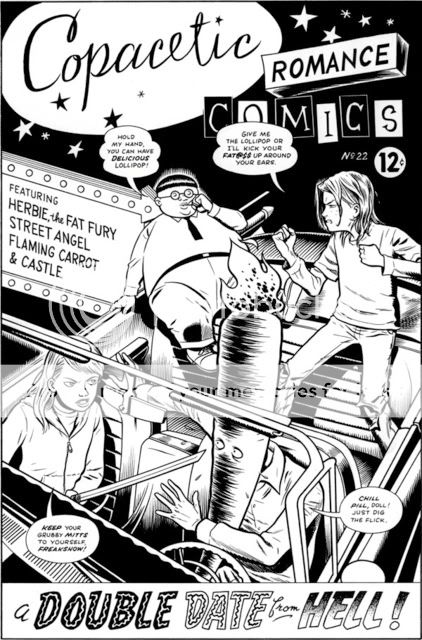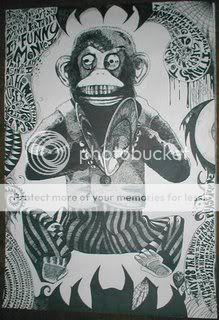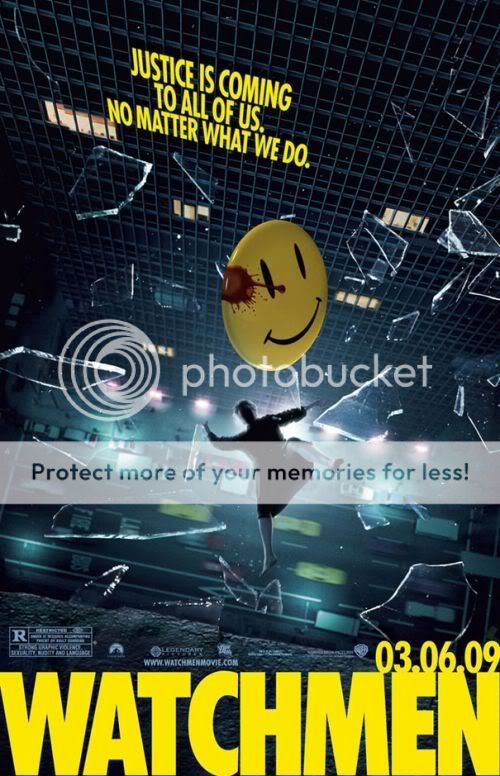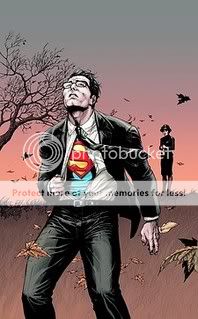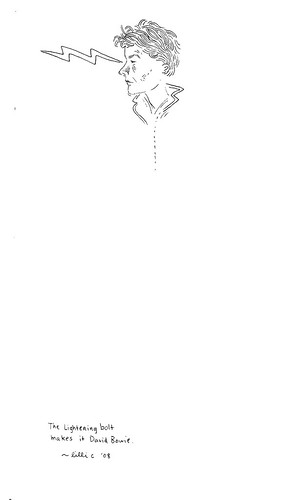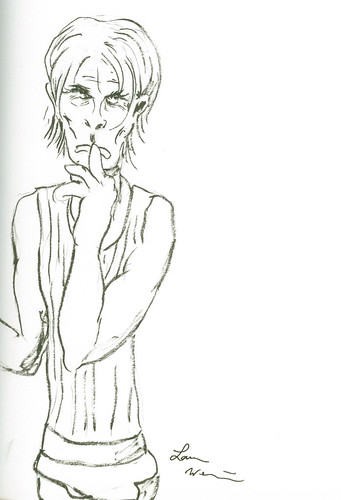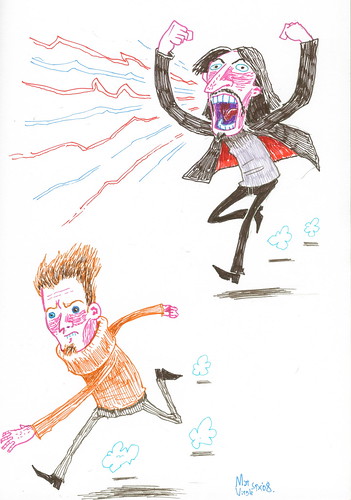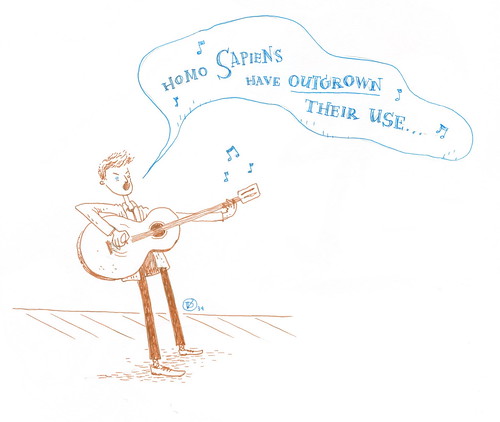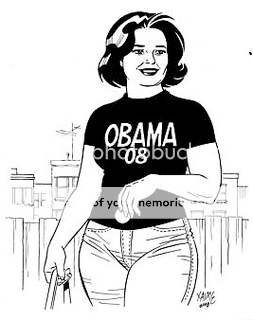Monster Men Bureiko Lullaby
Takashi Nemoto, writer/artist
PictureBox Inc, September 2008
200 pages
$19.95
What even to say about Monster Men Bureiko Lullaby? It’s the kind of book that sets up a “get it/don’t get it” dichotomy almost automatically. There’s very little in terms of traditional parameters against which you can weigh the endless parade of transgression and revulsion, the shit-eating and child rape, the cancer and mutilation, the squiggly, cluttered line and resolutely ugly characters and environments. Unlike Johnny Ryan’s work, it doesn’t use the gross-out constituent parts to build up jokes–and I’m not just talking Ryan’s more straightforward gag strips and funny stories, I mean it doesn’t even go in for the super-labrynthine, Pythonesque digression structure of some of Ryan’s recent-ish stuff–nor, of course, does it share Ryan’s lovely, classically influenced line. Unlike the work of Rory Hayes, it doesn’t convey that sense that you’re seeing someone’s searing, indelible, personal artistic vision–there’s no unique vocabulary of teddy bears and demons, no electrocuted lines that look like they radiated directly out of the artist’s brain.
Perhaps appropriately, what it most feels like to me is someone excreting their id all over the pages, paying virtually no attention to anything other than simply pooping out every horrible thought in his head. It’s like…if someone who was already kind of gross had their self-censoring mechanism surgically removed, and then did a week’s worth of 24-hour comics in a row. The initial suite of short stories–starring a man whose penis takes over his body, flipping it over so that the guy walks on his hands as his dick and balls take on the shape and skills of a face; an idiot-savant artist whose only subject is his penis, which he cuts off and sends to a girl he sees peeing as an attempt to mitigate her tragic penislessness; and “the world’s most mature baby,” who begins fucking his own mother while still in the womb–are somewhat disjointed in effect, eschewing storytelling rhythm for a pile-up of excess. The book’s epic centerpiece, the two-part “The World According to Takeo,” really is more in the vein of an improvised 24-hour comic–in an interview with PictureBox’s Dan Nadel included in the volume, Nemoto says he started the comic with a few simple themes and no idea of how it was going to proceed or end in mind. It meanders, escalates, and by its second part coheres into something more sophisticated than the rest of the material here: The presence of readily understandable themes like the relationship between sexual abuse and sex work, or the reveal of the main character, the sentient sperm Takeo, as a the pretty benighted but at least recognizable homosexual stereotype, give the formless outrageousness something to work against. Of course, you’re still talking about a comic co-starring a serial rapist who eventually dies of cock cancer.
This is not to say that there’s no legible philosophical content in here. Japan’s complex and at times disgraceful treatment of the victims of Hiroshima and Nagasaki and their descendants is an obvious reference point. I certainly think it’s more powerfully dealt with here than in the staid Town of Evening Calm, Country of Cherry Blossoms. Since the book savages anything it touches, both the victim analogues and the society that shuns them are treated viciously; in that sense it not only critiques but embodies that problematic stance–that’s honesty, I suppose. You also can’t help but feel that Japanese society’s simultaneous prurience and prudery–sexualizing schoolgirls but never depicting penetration in pornography, for example–is the target of the extravagantly outré sexualized violence on display here.
But the question is, is being deliberately without virtue a virtue? At what point does artlessness become an art in itself, and at what point does it simply remain artlessness? Down at the bottom of my sidebar you’ll see the phrase “KEEP COMICS EVIL.” Monster Men Bureiko Lullaby certainly does that. Is it enough? I know that for me, sometimes simply being offensive, thumbing your nose at polite society, feels like a tremendous victory, a nihilistic triumph. Yet at other times it makes me want to ask, “Is that all there is?” Which is it? I…I give up.

